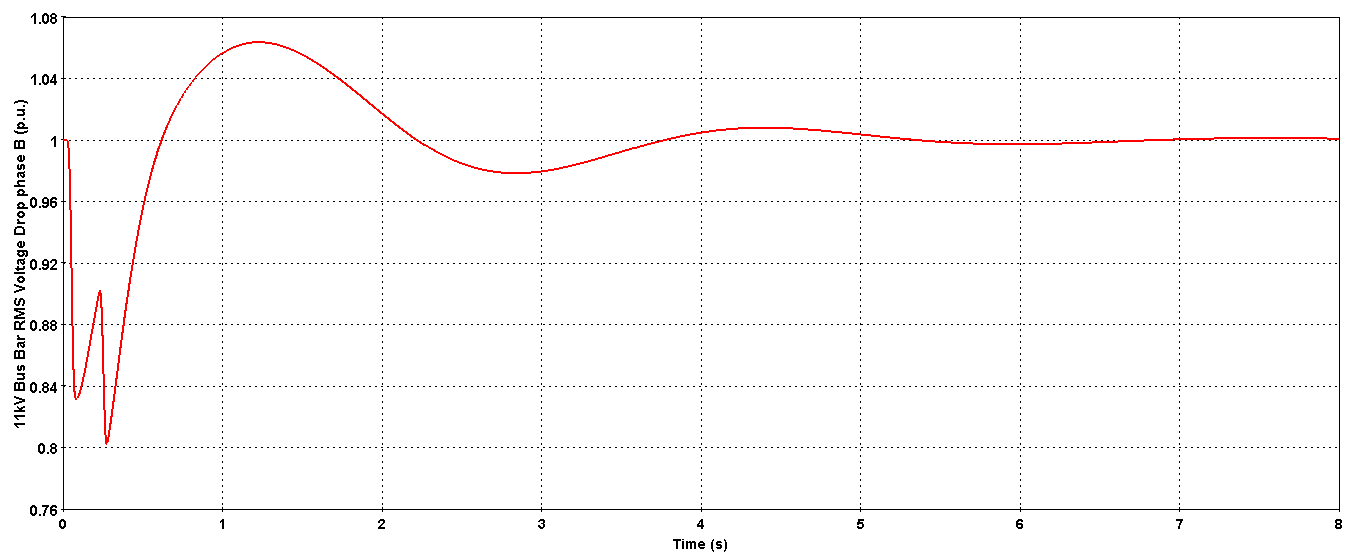BACKGROUND
The power system of an offshore gas platform was studied. The system is composed of a 100kV substation, connected from the upstream network through subsea cables and to the system through two main power transformers. Different loads (gas compressors, pumps) are fed.
The objective was to analyze the energization of the transformers and simulate the dynamics of different configurations of the system such as motor starting, and emergency states.
APPROACH
Model
For this study, PGSTech used EMTP® and its capabilities to accurately simulate the switching transients and the behavior of machines.
The aim was to verify that the stability of the platform’s power system is ensured when transformers are connected and motors are started. An additional specific configuration was also studied: emergency generators are providing the power to the platform system (which is isolated).
Generators and their controls, exciters and governors are modelled in EMTP® using control devices. The torque/speed characteristic of motors, pumps, and compressors is represented too.
Methodology
Transformer Energization The substation, the transformers and other equipment are modelled in EMTP®. An ideal voltage source with short-circuit impedances represents the transmission network at the PCC, which is connected through a constant parameter cable model. The T model is used to model the transformers. Particular attention is given to the modelling of the saturation, from the B-H curve data, which creates the inrush currents. This procedure explained in the CIGRE C4.307 Brochure 568 Transformer Energization in Power Systems: A Study Guide
has been used to model the air core reactance.
Different cases are simulated in EMTP®:
- Varying the switching time of phase of the breaker.
- Varying the transformer residual Flux.
- Minimal and maximal possible values for the short-circuit power at the PCC.
Then the transformer energization is simulated, with and without other already-connected transformers, in order to estimate the worst inrush currents and the voltage drops.
More information can be found on our webinar on capacitor bank energization
Dynamic Stability The aim was to verify that the stability of the platform power system is maintained when transformers are connected and motors are started. A specific configuration was also studied: emergency generators are providing the power to the platform system (which is insulated).
Generators and their controls, exciters and governors are modelled in EMTP® using control devices. The torque/speed characteristic of motors, pumps, and compressors is represented too.

Figure 1 : Voltage drop due to the switching of 2 transformers with a delay of 200ms
CONCLUSION
The results of the study allow PGSTech to determine the minimal time between the switching of two transformers, that ensures the stability, and proposed authorized sequences for the energization of all transformers. Moreover, the stability has been controlled for various events such as starting of a motor, or loss of a generator.
